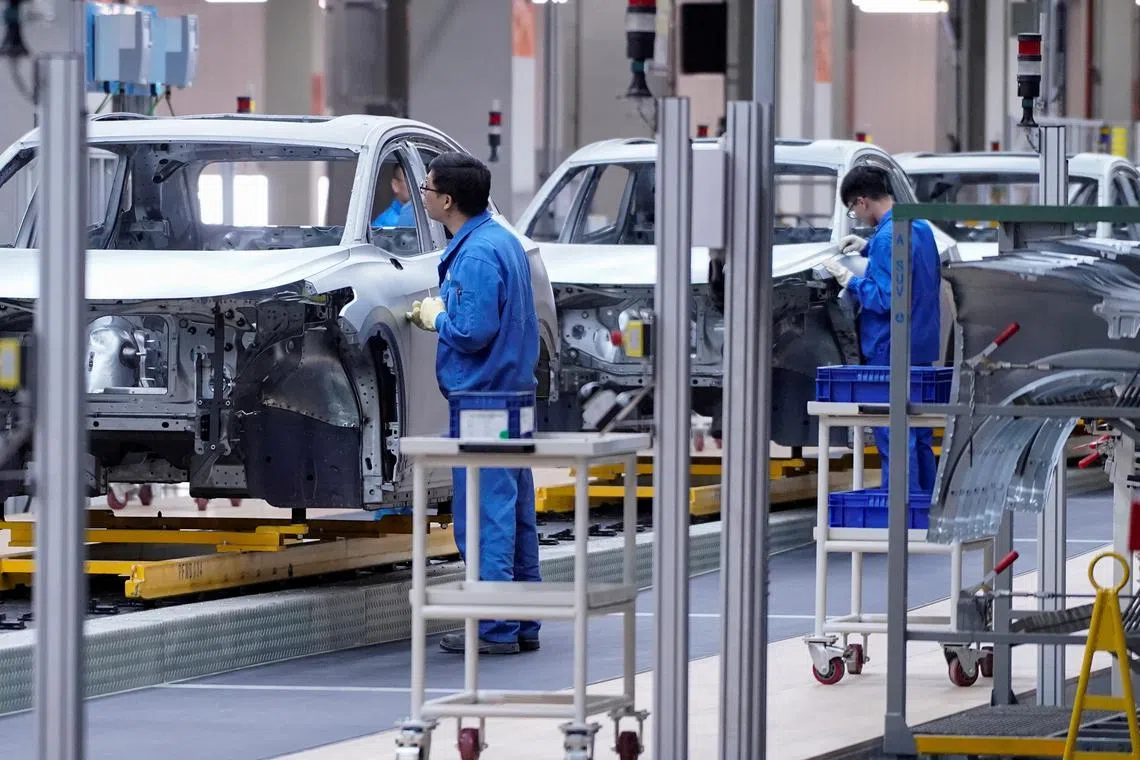World’s top graphite producer China to curb exports of key EV battery material
Sign up now: Get ST's newsletters delivered to your inbox

Graphite is used in the batteries for electric vehicles and China is the world’s top producer of the material.
PHOTO: REUTERS
Follow topic:
BEIJING – China will require export permits for some graphite products to protect national security, its Commerce Ministry said on Friday, in its latest move to control supplies of critical minerals in response to challenges over its manufacturing dominance.
China is the world’s top graphite producer and exporter and also refines more than 90 per cent of the world’s graphite into the material that is used in virtually all electric vehicle (EV) battery anodes, which is the negatively charged portion of a battery.
China is implementing the curbs at the same time that foreign governments are increasing their pressure on its companies over their industrial practices.
The European Union is weighing levying tariffs on Chinese-made EVs, arguing that they unfairly benefit from subsidies. Also, the United States government earlier this week widened curbs on Chinese companies’ access to semiconductors, including stopping sales of more advanced artificial intelligence chips made by Nvidia.
The curbs are similar to those in place since Aug 1 for two chipmaking metals, gallium and germanium. The restrictions have slashed exports of those metals from China recently and pushed up prices outside the country.
China’s Commerce Ministry said the move on graphite was “conducive to ensuring the security and stability of the global supply chain and industrial chain, and conducive to better safeguarding national security and interests”.
It added that it was not targeting any specific country. Top buyers of graphite from China include Japan, the US, India and South Korea, according to Chinese Customs data.
Under the new restrictions announced on Friday, China will require as at Dec 1 that exporters apply for permits to ship two types of graphite – high-purity, high-hardness and high-intensity synthetic graphite material, and natural flake graphite and its products.
Three types of “highly sensitive” graphite items have already been under temporary controls, the Commerce Ministry said, and are included in the new list.
Meanwhile, it dropped temporary controls on five less-sensitive graphite items used in basic industries such as steel, metallurgy and chemicals.
With rising sales of EVs, automakers are racing to lock in supplies from outside China, but shortages are looming.
“With this new graphite export curb, South Korean firms which heavily rely on China for graphite imports would need to seek alternatives, such as mines from the United States or Australia, but it would likely increase the cost burden for many,” said Hyundai Motor Securities analyst Kang Dong-jin.
South Korea’s Trade Ministry said in a statement that it had held a meeting on Friday with battery and material makers on how to respond to the export curbs.
“The South Korean government will closely communicate... to avoid production disruptions in the lithium-ion battery sector,” South Korea’s Industry Minister Ahn Duk-geun said.
Japan’s top government spokesman Hirokazu Matsuno said on Friday the country plans to ask China about the operational policies of the new measures and will take appropriate steps if they violate World Trade Organisation rules.
Shares in China’s new energy vehicle and battery makers rose after the announcement.
Analysts said it was not clear how much impact the new measures on graphite will have in the short term.
“This control is not a complete ban, and there has been no significant impact on any industry during the previous temporary control,” said Mr Ivan Lam, a senior analyst at Counterpoint Research.
Prices for natural flake graphite were 3,950 yuan (S$750) a tonne this week, down 25.5 per cent from the beginning of 2023 because of declining demand from the EV sector, according to Mysteel.
“This action could set them on an upward trajectory internationally, while keeping domestic prices low for Chinese battery producers,” said Argus Media’s head of battery metals Tom Kavanagh.
Still, exports are likely to rise ahead of Dec 1, said Rystad Energy senior analyst Echo Ma, especially to countries with established battery industries like Japan, South Korea and the US.
China has reduced natural graphite mining in recent years to protect the environment, instead ramping up synthetic graphite output since 2021. The synthetic form now accounts for 70 per cent of China’s output, according to Mysteel. REUTERS

